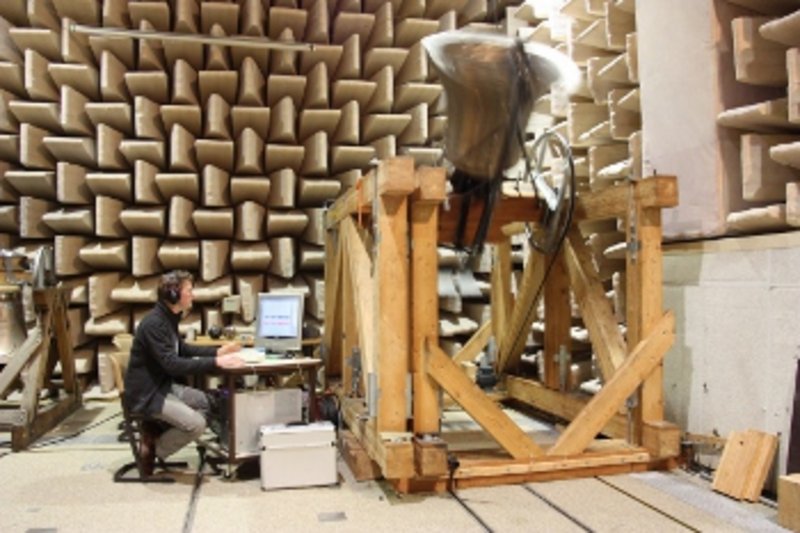European Competence Centre for Bells (ECC-ProBell®)

To conduct focused research into bells, Kempten University of Applied Sciences established the European Competence Centre for Bells. The core elements are a large anechoic chamber, a materials science laboratory, and a dedicated team of staff. As part of a European research project, the Competence Centre has created and developed a wide range of measuring equipment, computers and analysis and simulation programs, which are used intensively in ongoing projects together with the required data on the solidity of bells.
Research and development topics
- Preserving and promoting bell ringing as a unique musical monument and cultural asset of European history
- Optimizing ringing to reduce the risk of damaging bells coupled with high-quality acoustics
- Analyzing condition to detect cracks / monitor condition, based on bells’ musical fingerprint
- Optimization of bells in towers with dynamic vibration problems
- Investigating and researching different ringing traditions
- Research and development to reduce noise emissions
ECC-ProBell® – facts and figures
- The only research institute for church bells in the world since 2009
- Over 500 bells analyzed on more than 150 towers throughout Europe and worldwide
- Projects in St Peter’s Basilica in Rome, Sacre Coeur in Paris, St Stephen’s Cathedral in Vienna, Berne Cathedral, Cologne Cathedral, Munich’s Frauenkirche
- Atlas of bells with information on the condition of bells
- Location: Bahnhofstr. 61, 87435 Kempten, Germany
- www.ecc-probell.de
Contact
European Competence Centre for Bells (ECC-ProBell®)
info(at)ecc-probell.de
Building D
Bahnhofstrasse 61, 87435 Kempten, Germany
Website
Dr Michael Plitzner
Head
Tel. +49 (0)831 2523-372
michael.plitzner(at)hs-kempten.de
Further information
Atlas of Bells
You can explore an atlas of bells showing bells in Germany and neighbouring countries, including some sound recordings, here.. Enjoy your trip!
International projects
- St Ursus Cathedral in Solothurn and the Town Reformed Church in Thun
The bells of St Ursus Cathedral in Solothurn and the Reformed Town Church in Thun are currently being extensively overhauled and renovated. As part of this process, ECC-ProBell was commissioned to evaluate the condition of the bells and to suggest how to potentially limit damage as far as possible while producing high-quality sound.
In collaboration with the bell foundry H. Rüetschi AG in Aarau, the bell systems were evaluated using measuring equipment, including the stress loads during ringing, and the bells’ “fingerprints” were recorded. In line with pervious measurements taken of bells in Switzerland, it was found that the clappers generally installed during the decades following the Second World War frequently cause relatively high stress loads when the bells ring. It is also the case for the bells that we examined that action is needed to ensure less damage is caused during the ringing process and to improve the tonal resonance.
- St Stephen’s Cathedral in Vienna
The “Pummerin” bell in St Stephen’s Cathedral was inspected in 2011 and then fitted with a low-risk clapper based on our calculations.
- The Cathedral of Bern
We fitted new clappers to the bells in Bern Cathedral, as the old ones caused stress loads during ringing that presented a high risk of damage and limited the quality of the sound produced.
- St Peter’s Cathedral in Rome and Sacré Cœur in Paris
The big bell in St Peter’s Cathedral in Rome and the Savoyarde in Sacré Cœur in Paris have both been inspected for damage.